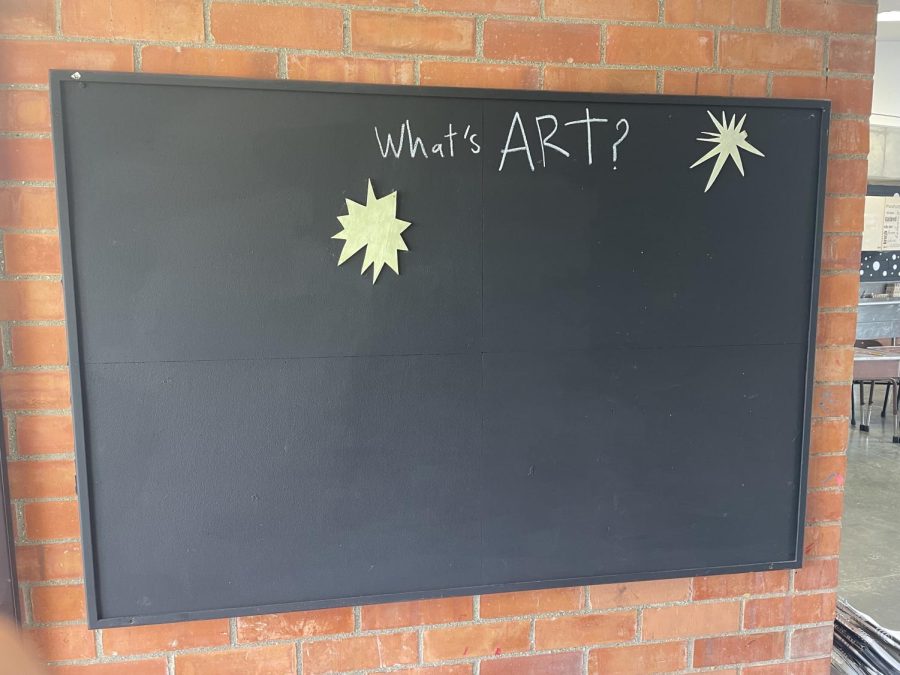The Brick Aesthetic
As a new student who has walked the TCS hallways for a relatively short time, I have noticed that the school community really enjoys one very specific aesthetic: brick. As you would see in a penitentiary or a public school, the Columbus School has gone out of its way to maintain this “trademark” color for everyone to enjoy.
Although you might imagine brick as the color in the walls, it is not only that, it is the spirit students provide to the community. At TCS, student performances, interactions, and work displays do not exist, and I wondered why? To solve this mystery I interviewed 4 teachers whose job is to add color to the school; turns out it is not them who are keeping the school dull, it is the school itself! Making matters worse, this problem has been ongoing for years and is worsening by the second.
Since the implementation of the new curriculum in 2015, art and music classes have been set to compete with AP’s, never making these classes a requirement. This change not only drove existing students away from the programs but removed the opportunity for everyone to experience what art is at its core. If the school were to restructure their curriculum once again, this change could promote young students to develop their artistic side and experienced students to express it. Not only diversifying the student community itself, but making school events (public and private) more entertaining and enjoyable.
As you may know from personal experience, any activity requires practice; constant and timely practice everyday for multiple days (or years!). Art is no different, whether playing an instrument, painting on a canvas or memorizing lines for a play, a student learning these skills needs the opportunity to take the class for many years. This opportunity is not provided by the TCS curriculum, where students have to decide between a class that will look good for universities and one that will develop their artistic side. At least for me, this is an obvious choice. According to Carlos Julian Fernandez, band teacher at TCS, the competition of music and AP led to less than 40% of the school’s instruments being used. Based on my own situation, an AP student who plays an instrument, choosing a music class over an AP credit is impossible. This is why they should not compete against each other. If the school singled out a block exclusive for art classes, students would develop a skill they might even love and develop successful practicing and performing skills which an English class can’t provide.
Although I speak from experience, I know that there are many students out there with similar points of view. Whether a painter, dancer, or performer, all students looking for academic excellence result in their fine arts classes being shadowed by AP’s. Still, there is another solution: if the school introduced AP art, AP music, or AP drama, many students would be interested to pursue their interests and fulfill their artistic side. I know that asking for such a big change may not seem realistic for the school directives, if they decided to pass on these suggestions, I would at least ask the school to improve the support they currently give the art program.
After talking with Sofia Arcila, High School art teacher at TCS, she described one of her main issues in the art department: “the art gallery has become a meeting center, an issue even before the pandemic.” Why is this a problem? According to the Art Education University, displaying student art provides a stronger sense of community and a cooperative environment; when students know their work will be displayed, effort increases. Put yourself in the students’ shoes: you will produce something that your friends, family, and teachers will see. How will this change the way you work? Or the effort you give? By occupying the gallery with art unrelated events, students lose interest in their class and don’t engage with an objective. To fix this issue I would suggest that the school changes their meeting locations: the library, conference rooms, and empty classes are just examples of possible locations. Overall, small changes like this one will create strong positive impacts on the community.
Last but not least comes drama, a department I didn’t even know existed until I decided to write this essay, which just comes to show the support it receives from the school. Presently, there is no such thing as a drama class or afterschool due to lack of student interest, but according to Marta Lucia Vargas, Middle School Spanish teacher and drama director, there is. Before the pandemic, the drama team had been preparing for a play alongside the university of Medellin, who provided visuals, scenery, and music. Fast forward to today and although students have agreed to perform, the school has not allowed the play to move forward. Keep in mind the drama club raised money to pay for everything to exempt TCS from spending money. Small issues like this one ultimately keep art teachers and passionate students from expressing themselves to the community.
Overall, I know that the school is not an art oriented school, but this does not exempt them from supporting their art programs. Like a chemistry class with no lab or a calculus class with no calculator, the school is taking away important tools and opportunities classes like these need to thrive. Today, there are no such opportunities at school and the musical student can play, the painter can’t show and the actor can’t perform.




